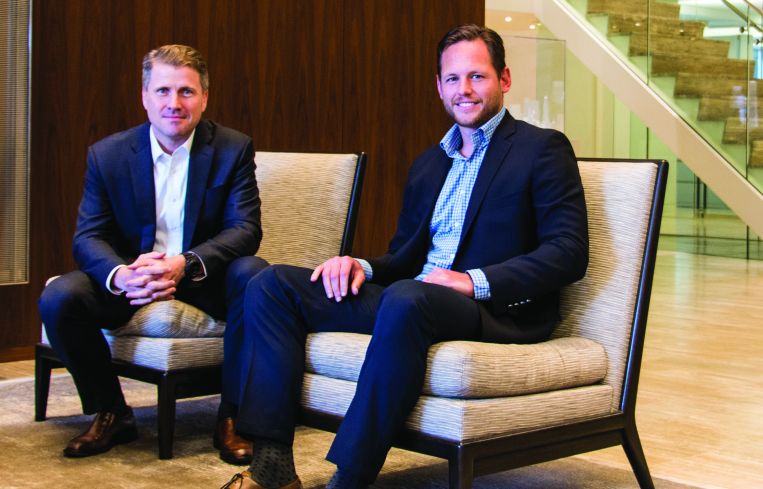CBRE’s Tom Traynor and James Millon on Making the Move From Banking to Brokerage
By Guelda Voien July 17, 2017 5:35 pm
reprints
Tom Traynor and James Millon joined CBRE one year ago from Deutsche Bank, where they focused on making the large loans they now advise institutional clients on. Commercial Observer talked with the dynamic, large-loan duo about how to get a construction deal done, what intense levels of scrutiny commercial mortgage-backed securities loans now require and the switch from lending to advising.
Commercial Observer: How does being a broker or adviser differ to being a lender?
Tom Traynor: We’ve found there’s actually not that much difference. We’ve found amazing synergies. After spending decades in commercial real estate debt at Deutsche [Bank] and other places, and with our mandate here being to grow the institutional large loan business, we’ve found that there has not been that much difference. I think our background—the hardcore credit real estate training—is helping us become real advisers at CBRE, as opposed to just brokers. I think that’s what’s setting us apart.
Are you involved in the nitty-gritty of the structuring? I imagine you’re able to tell a borrower what kind of structure they need for any given situation.
Traynor: Yes, we’re helping [borrowers] strategize on their debt needs. We’re involved very early in the process—whether it’s an acquisition or a refi. We’re coming up with ideas, with something that the sponsorship has not really thought of yet. We’re looking at different structural elements and different ways they can be priced. That’s where we’re adding a lot of value, and I think that’s been recognized by our clients.
Can you tell us about a unique structure that you strategized on recently?
James Millon: We’ve been here 10 months, and we’ve been able to sign up roughly $4 billion in mandates—deals that have just closed or are about to close. One of the larger transactions we’ve been working on for about six months. It’s a large portfolio and a sponsor that’s well known within this asset class niche but not necessarily [well known] in the capital markets. So in sizing it for a floating-rate CMBS execution, we really had to put the capital structure together. That started with a CMBS first mortgage, engineering in an accretive mezzanine structure that is highly unique. It didn’t look anything like the mezzanine deals that are out there today. And there is a preferred equity piece as well. We essentially put the entire capital structure together, up to 90 percent [leverage].
What are the particular challenges of doing a large loan in this market?
Traynor: The type of deals that we are doing are north of $300 [million], $400 million, so that falls into a couple of different buckets. If it’s a single-asset, single-borrower [deal], you can do a CMBS loan. But a lot of the deals—large office towers in New York, for instance—there is a lot of scrutiny. When the bond issuance comes to market, investors are really digging in on one specific asset, as opposed to with a conduit pool where there are a lot of assets in there, and it sort of becomes more of a statistical analysis to some extent. But here there is so much scrutiny on the commercial real estate itself and the structural elements to it that there’s kind of nowhere to hide.
What’s an example of really intense scrutiny of an asset?
Traynor: They uncover everything; they pick up every rock and look under it. They go through the rent roll and look at every tenant, the terms of the lease, and they look at the market, the submarket. They are looking at the buildings across the street and down the block, so it’s very, very focused attention on one single asset. The flipside is typically these deals have large equity infusions, institutional sponsorship, so even though there’s a ton of scrutiny, there are usually so many things in the “plus” column that it drives a lot of interest from bond investors.
Millon: On the qualitative side, I think you have predominantly institutional clients, and when they are looking for an adviser, what they are really looking for is people who are of the grade and caliber of their own employees. You need to make sure that person is capable and represents someone you would hire internally. We’ve been on the other side negotiating with these clients, and once you’ve gone through that whole dance, there’s a level of respect.
Construction finance is harder in this market but obviously not impossible. How do you get a deal done at this point?
Millon: It takes more time with lenders and certainly more effort on the part of sponsors and their advisers. The other aspect is a lot of these large construction loans go to large banks, sometimes debt funds if there is a higher leverage. The commercial banks aren’t interested in relative pricing. They’re binary. If it’s north of 55 percent [loan-to-value or cost], they’re out.


